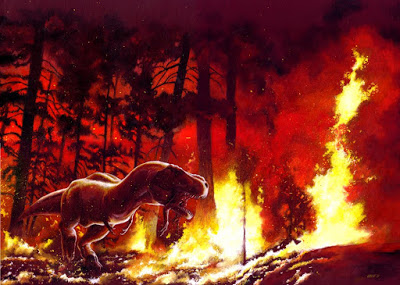
Scientists from the Department of Earth Sciences at Royal Holloway, University of London together with colleagues from the USA, Russia and China, have discovered that forest fires across the globe were more common between 300 and 250 million years ago than they are today. This is thought to be due to higher level of oxygen in the atmosphere at that time.
The study which was published in the journal Frontiers in Plant Science, found that peats that were to become coal contained high levels of charcoal that could only be explained by the high levels of fire activity.
The team used the data from charcoal in coal to propose that the development of fire systems through this interval was controlled predominantly by the elevated atmospheric oxygen concentration (p(O2)) that mass balance models predict prevailed. At higher levels of p(O2), increased fire activity would have rendered vegetation with high moisture contents more susceptible to ignition and would have facilitated continued combustion.
In the study they examine the environmental and ecological factors that would have impacted fire activity and conclude that of these factors p(O2) played the largest role in promoting fires in Late Paleozoic peat-forming environments and, by inference, ecosystems generally, when compared with their prevalence in the modern world.
Professor Andrew Scott, one of the lead authors, said: “High oxygen levels in the atmosphere at this time has been proposed for some time and may be why there were giant insects and arthropods at this time but our research indicates that there was a significant impact on the prevalence and scale of wildfires across the globe and this would have affected not only the ecology of the plants and animals but also their evolution.”
Professor Scott and his colleagues and students at Royal Holloway have pioneered the study of fire in Earth’s deep past. Professor Scott, added: “We have been able to show that wildfire was an important element in Earth System many hundreds of millions of years before the arrival of humans.”
Reference:
Ian J. Glasspool, Andrew C. Scott, David Waltham, Natalia Pronina, Longyi Shao. The impact of fire on the Late Paleozoic Earth system. Frontiers in Plant Science, 2015; 6 DOI: 10.3389/fpls.2015.00756
Note: The above post is reprinted from materials provided by University of Royal Holloway London.










